What are the different styles of homes? Whether you’re planning to build a new home or are just interested in the different architectural house styles, this article is for you. I list 10 different styles of homes that are most common in the United States.
The 10 different styles of houses (not in any particular order of popularity) are as follows:
- Ranch
- Craftsman
- Cape Cod
- Victorian
- Contemporary
- Colonial
- Tudor
- Log Home
- Mediterranean
- Tiny Home
Read on to learn more about these different styles of homes, as well as the history behind them and their defining features.
10 Different Styles of Homes
1. Ranch
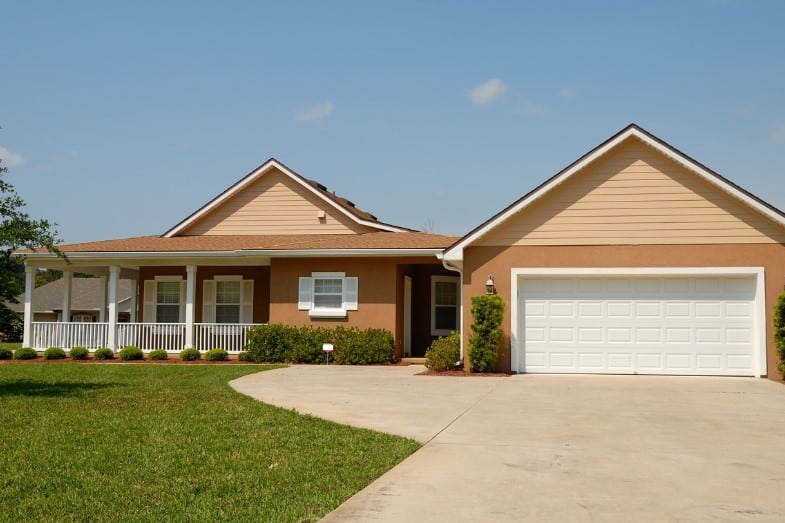
First on our list of different styles of houses is the Ranch style. Ranch style homes, also called ramblers, were most popular in the 40s to 70s. According to a 2016 study by Trulia, a subsidiary of Zillow, it’s one of the most popular architectural styles of homes among 34 states in the United States. In fact, in North Carolina alone, it makes up 81 percent of the housing market. [1]
There are many reasons why ranch style homes are common. They’re a perfect starter home for a young family or couple because they’re easy to maintain. You can also quickly remodel them, making them a suitable option for people who flip homes for a living.
Ranch style homes have a simple design. Some of their distinguishing characteristics include:
- Rectangular, L-shaped, or U-shaped house plan design
- One-story or single floor
- Low, pitched, hipped (common) roof
- Large picture windows (give you an unobstructed view of your outside surroundings, usually facing the street)
- Sliding glass patio doors
- Wide eave overhangs
- Typically have an attached carport or garage
2. Craftsman
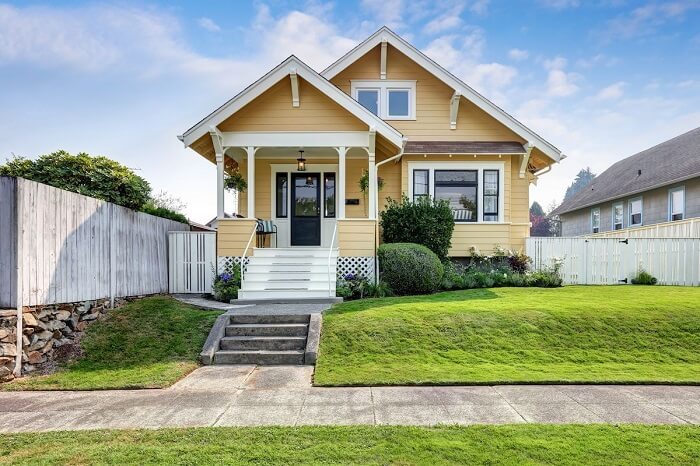
Modern craftsman style homes can trace their roots to the 1860s in Britain. It was closely tied to the British Arts and Crafts movement. This social and artistic movement emerged as an attempt to revolt against excessively decorated, poorly designed, and carelessly constructed Victorian architecture.
This style of home was mostly found in California in the early 20th century. Today, according to the American Home Shield, the Craftsman style home makes up most parts of the Midwest, like Michigan and Ohio. [2]
It’s hard not to like the American craftsman style homes because of their functionality, simplicity, sturdiness, and focus on individual handiwork (giving them unique and recognizable features).
Here are a few distinguishable features of craftsman style homes:
- Low-pitched, wide, and either hipped or gable (characterized by its triangular shape) roof style
- 1 1/2 stories
- Unenclosed rafters underneath the eaves
- A front porch with large, battered columns to make the home warm and inviting
- Tapered columns lining the entry for sturdiness
- 4-over-1 or 6-over-1, double-hung windows for energy efficiency and improved airflow
- A single dormer
- Incorporates handcrafted wood, glass, and metalwork
- Mostly made of natural materials, such as bricks, tiles, and wood
- Large fireplace (usually with built-in cabinetry on one side)
- Built-in cabinetry
- Nooks and window seats
3. Cape Cod
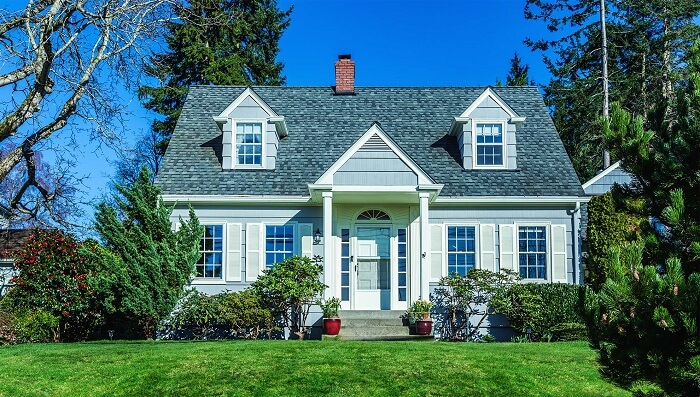
Next on our list of different styles of houses is the Cape Cod house style. Cape Cod-style homes are one of the most loved architectural styles of homes in the United States. This style of home originated in New England in the mid-1800s—before Victorian homes surpassed its popularity. The style was eventually brought over to the United States by early Puritan settlers.
Trivia: In the 1800s, the president of Yale University, Reverend Timothy Dwight IV, first coined the term “Cape Cod house.” He came up with the name after he visited Cape Cod (Massachusetts).
Like ranch homes, Cape Cod-style homes are suitable options for a small family or first-time homebuyers because they’re typically less expensive. There are four types of Cape Cod homes to choose from: half, three-quarter, quarter, and full.
Here are some of the general characteristics of Cape Cod homes:
- 1 or 1 1/2 stories
- Usually covered with shingle sidings or clapboard sidings
- A uniform layout with a centered front door
- Multipaned, double-hung windows with shutters
- A steep, inverted V-shaped roof (gable) with an overhang and side gables
- Low ceilings
- Gabled dormers
- A large, centralized chimney
- Clean lines and little ornamentation on the inside and outside
- A center-hall floor layout
4. Victorian
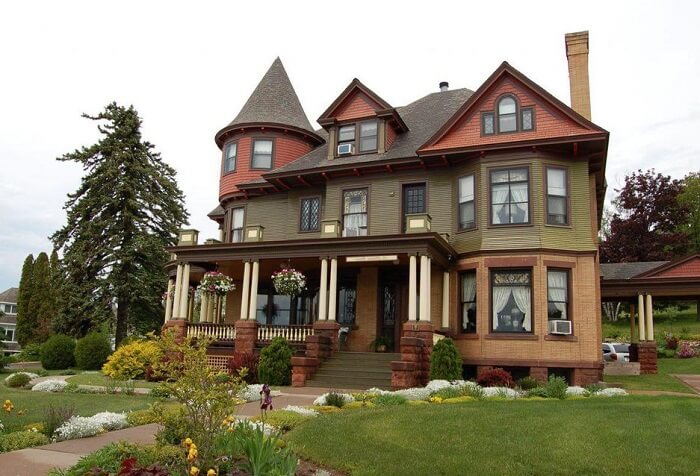
Victorian homes were named after Queen Victoria, who ruled over Great Britain and its colonies from 1837 to 1901. These homes were built to reflect the rapid change, technological advancement, and growing population of the wealthy middle class during the Victorian era.
The Tudor style of home is known for its colorful and intricate exterior design. There are different types of Victorian-inspired homes, and each has a wide range of architectural features. In the United States, the three most popular types of Victorian homes are Folk Victorian, Gothic Revival, and Queen Anne.
Here are some of the general characteristics of Victorian homes:
- Steep, triangle-shaped roofs that are facing the front
- Two to three stories high (because they’re usually built on narrow lots)
- Round or octagonal towers and turrets (small towers that vertically project from a structure’s wall)
- Dormers (with windows) that project vertically beyond the home’s sloped roofs
- Colored, glazed bricks that complement the collection of intricately carved wood, which usually decorates the doorways, eaves, and windows
- Without chimneys (usually a feature of modern Victorian homes)
- Stained glass and ornate staircases
- High ceilings (for energy efficiency)
5. Contemporary
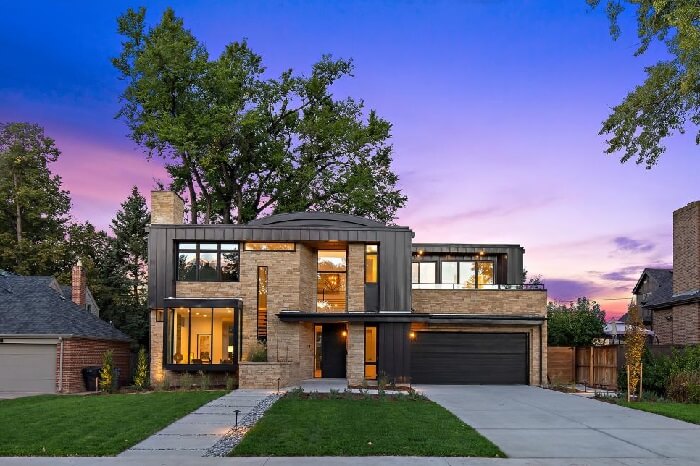
Next on our list of different styles of houses is the contemporary style. People often confuse contemporary homes with modern homes. They’re different, although they share some similar features.
When you say modern design, it usually refers to an architectural style that was popular or produced between the 1950s and 1960s. Modern architecture was beloved by many because of its clean lines and minimalism.
Simply put, contemporary architecture follows the current trends. It mostly focuses on a broad range of styles that were produced in the last half of the 20th century (usually between 1950 and 2000).
Contemporary homes embrace the “less is more” approach to home design. Like modern style homes, they have an open layout, which means it allows you to go to the different parts of your home (kitchen, living room, dining room, etc.) without any obstruction. They also let natural light inside and show the surrounding environment.
It can be difficult to pin down the exact features of contemporary homes because they’re always evolving to match the current trends. Although the design elements below tend to be common among contemporary homes:
- Every piece and design has a purpose
- Open layout
- Minimalist design and clean geometric lines
- Combines the features of different architectural styles, but expressed in various ways by infusing new ideas in architecture
- Free-form or organic lines, which express individuality and movement
- Whole-wall windows or clerestories (a series of windows that are above eye level)
- Facades showcase different, unique, and asymmetrical shapes
- Uses energy-efficient, non-toxic, recycled, and sustainable materials
6. Colonial

This architectural home design was brought to the United States by European colonists in the 1600s. It was one of the most popular home styles up until the 19th century.
Today, colonial-style homes still exist in the United States, mainly in New England, Illinois, and the southern region of the United States, like Virginia. They’re popular choices for most people who dream of owning their “American Dream home.”
Colonial style homes come in different types, so expect them to have differences in their interior and exterior designs and elements. However, they’re mostly known for their symmetry. They’re also simple and versatile.
Here are some of the distinct characteristics of colonial homes:
- Paired chimneys
- A center hall
- Brick or clapboard sidings
- Front door at the center, with two windows on both sides, transom (windows above the door), and a pediment (a triangle-shaped structure on the upper part of the door)
- A bay window
- Rectangular or square in shape
- Two or three stories tall
- A central staircase (usually made of wood)
- Multiple windows (five upstairs and one above the front door), usually double-hung with shutters, and multipaned
- Triangular, medium-pitched roof for shedding water, snow, and ice faster
- Bedrooms are found on the second and third floors
- Shared living areas of the home (e.g., dining room, family room, and kitchen) are on the first floor
7. Tudor
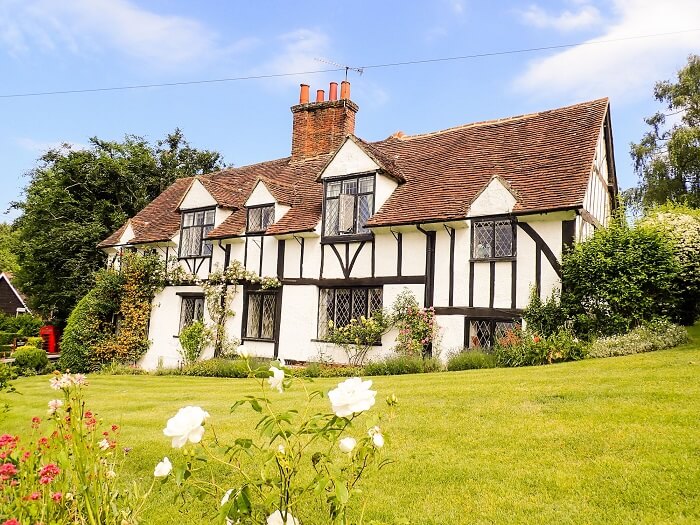
Next on our list of what are the different styles of homes is the Tudor style. Tudor style of houses finds its roots in England in the late 15th century and until the early 16th century.
This type of architectural home style made its way to the United States from 1900 to 1940, or during World War II. Of the different styles of homes built in 1900, the Tudor style is one of my favorites.
Today, you’ll find Tudor homes mostly in the wealthy suburbs of the Midwest and the Northeast States. The majority of the Tudor homes in Washington were built between the 1920s and 1930s.
These homes are considered one of the most expensive architectural styles of homes in the United States. In fact, they could cost more than double the price of an average ranch-style property.
Here are some of the distinct characteristics of Tudor homes (Old English style):
- Tall, narrow, and multipaned (small and diamond-shaped) windows set in wooden frames
- Dormer windows (found in modern versions of English Tudor homes)
- Tall and narrow doors made from wood
- Steep, gabled, or cross-gabled (not hipped) roof covered in slates, tiles, or thatch (banned in London in the 1960s)
- Wooden frames (usually made from oak)
- Stone or wood floors
- H-shaped or E-shaped floor plan
- Exposed wood beams on the exterior, with whitewashed walls in between them
- A few homes have beams from the ground to the ceiling
- One to three massive chimneys with decorative chimney pots
8. Log Home

The origin of log homes in the United States is still unclear. It’s widely believed that they flourished in North America in the 1600s when the Finnish people introduced their wood construction tradition.
Builders usually use cedar, cypress, fir, hemlock, oak, pine, poplar, and spruce in making these homes, and are divided into four types:
- Post and beam
- Timber frame
- Full scribe
- Hybrids
People often mistake traditional log homes with timber frame homes. They’re different in many ways—for instance, how their main floor walls are created.
Logs are stacked on top of each other horizontally to create the main floor walls of log homes. They’re joined together by lag bolts or cutting specific shapes into the logs to interlock them at the corners.
Instead of stacking layers of logs, timber homes use posts and beams to construct the wall frame, then every timber is held together by wooden pegs.
Here are some of the distinct characteristics of modern and traditional log homes:
- Modern amenities, like air conditioning and heating systems
- Metal roofing in some styles
- Stone pillars
- Long stretches of glass
- Large windows and bay windows to let more natural light inside the house
- High ceilings
- Provide a superb acoustic space (one of the most important features of log homes)
- Log surfaces are antibacterial
- Give off a healthy and delightful scent
- Effective moisture control and air circulation
9. Mediterranean

The Mediterranean style of houses is a fusion of Greek, Italian, and Spanish architectural styles. If you love homes that are simple, elegant, warm, and timeless, Mediterranean homes are for you—that is, if you have the budget. According to Market Watch, the average price of this type of home is $1.32 million. [3]
In the United States, Mediterranean homes became popular from 1918 to 1940. Most of them are found across warm-weather locations, like California, Florida, and other Southern states.
Why are they more suitable for locations with warm weather year-round? One reason is that their low-pitched roof isn’t designed to drain heavy rainwater or snow efficiently. Another reason is that their vaulted ceiling makes it difficult to maintain consistent home temperature, especially during winter.
Here are some of the distinct characteristics of Mediterranean homes:
- Large exterior windows
- Double exterior door with an arched doorway and an arched window (one or more)
- Low-pitched, red-tile roof
- Brick or stucco siding
- Vaulted ceilings
- One to two stories
- Enclosed outdoor spaces
- Roman-inspired arches and ornamental designs in the interior and exterior of the home
- Landscaping and courtyards
10. Tiny Home
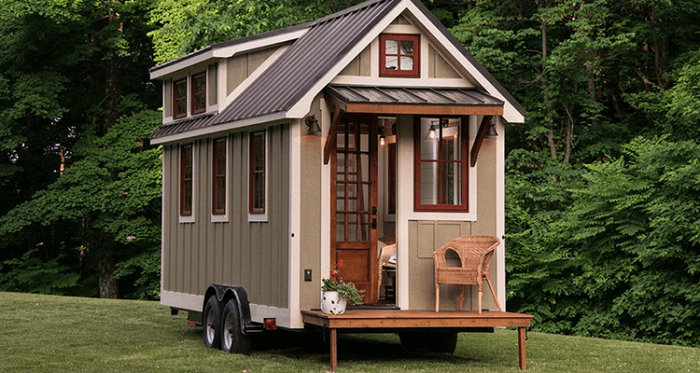
The tiny home movement isn’t really a new concept. It has been around on and off for many years. The most recent movement started in 1997.
People buy or build tiny homes for many reasons:
- Don’t want to have a mortgage
- Want to stop paying expensive rent
- Take their home wherever they want to go
- Want to save more money to live a certain way or achieve a particular goal
Not all states are “tiny home-friendly.” If you’re considering living in one of these homes, the best places to go tiny are California, Florida, North Carolina, Oregon, and Texas.
Building a tiny home can cost between $10,000 and $180,000, or $30,000 to $40,000 on average. [4] You also have to consider the building, homeowner’s insurance, inspection, land use, and zoning laws and fees of the municipality you plan to park your tiny home.
Tiny homes also come in different shapes, sizes, and types. Here are some of their distinct characteristics:
- Sizes are less than 400 square feet, although others consider approximately 500 to 800 square feet to be tiny
- Placed on a flatbed trailer or a permanent foundation
- Gambrel, gable, mansard, hipped, flat, and shed roof types
- One or two loft beds (common), Murphy bed, or elevating bed
- Might include a composting toilet, shower, and kitchen
- Creative storage options, such as under stairs drawers, slide-out spice racks, seats with built-in drawers, ceiling storage, and drawers under the bed
- A rooftop deck (found in East Coast tiny homes)
- Space-saving furniture
- Ladder or stairs to access the loft
The below video shows photos of the home styles in our list, plus some other styles:
Conclusion – Different Styles of Homes
So, to recap, what are the different styles of homes? The ten different styles of homes that are common in the United States are as follows:
- Ranch
- Craftsman
- Cape Cod
- Victorian
- Contemporary
- Colonial
- Tudor
- Log Home
- Mediterranean
- Tiny Home
Whatever your ideal home style is, be sure to take your time to explore your options and learn the right strategies for home buying. The above list will help you narrow down the style that is right for you, so you can find your dream home.









